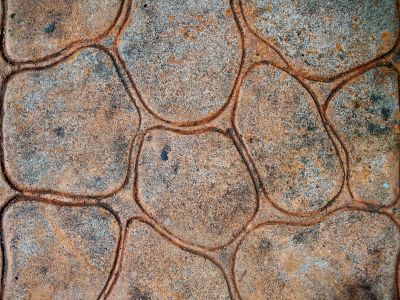Ultimate Product Picks For Stamped Concrete Service Providers
A curated selection of must-have items that support professional stamped concrete work with ease and excellence.
 Stamped concrete is a popular decorative option for enhancing the appearance of various outdoor surfaces such as patios, walkways, and driveways. This technique involves imprinting patterns and textures onto freshly poured concrete to mimic the look of natural stone, brick, slate, or other materials. To achieve durable and aesthetically pleasing results, a range of specialized products are used during the stamping process. These products help in creating realistic textures, vibrant color effects, and long-lasting finishes that can withstand foot traffic and weather conditions.
Stamped concrete is a popular decorative option for enhancing the appearance of various outdoor surfaces such as patios, walkways, and driveways. This technique involves imprinting patterns and textures onto freshly poured concrete to mimic the look of natural stone, brick, slate, or other materials. To achieve durable and aesthetically pleasing results, a range of specialized products are used during the stamping process. These products help in creating realistic textures, vibrant color effects, and long-lasting finishes that can withstand foot traffic and weather conditions.
Top Overall Option
Concrete Release Agents
Concrete release agents are essential for ensuring clean separation between stamping tools and the concrete surface. They help in preventing sticking, facilitate pattern transfer, and can add subtle color accents to enhance the textured appearance. High-quality release agents are easy to apply, offer consistent coverage, and contribute to achieving professional results with minimal effort. Selecting the right release agent tailored to your specific project needs can significantly improve the final aesthetic and durability of stamped concrete surfaces.
Types of Products For Stamped Concrete Service
Color Hardener
Color hardeners are broadcast onto fresh concrete to add vibrant, durable color and enhance the surface texture for stamping.
Integral Color
Integral color is mixed into the concrete before pouring, providing consistent color throughout the surface.
Release Agents
Release agents prevent sticking of stamping tools and can add color accents to the finished surface.
Color Stains
Color stains are applied to the surface after stamping to create varied and natural-looking color effects.
Sealants
Sealants protect stamped concrete from moisture, stains, and wear, maintaining its appearance over time.
Overlay Products
Overlay products are used to repair or resurface existing concrete before stamping or coloring.
Texturing Tools
Texturing tools help create realistic patterns and textures on the concrete surface during stamping.
Color Enhancers
Color enhancers are applied to deepen or highlight the colors for a more vibrant and durable finish.
Acid Stains
Acid stains produce variegated, translucent color effects that add depth to stamped concrete.
Polyurethane Coatings
Polyurethane coatings provide a high-gloss finish and excellent protection for stamped surfaces.
Epoxy Coatings
Epoxy coatings offer a durable, chemical-resistant surface suitable for decorative stamped concrete.
Anti-slip Additives
Anti-slip additives improve traction on stamped concrete surfaces, especially in wet conditions.
Cleaning and Prep Solutions
Cleaning solutions prepare the concrete surface before stamping or sealing to ensure proper adhesion.
Curing Compounds
Curing compounds help retain moisture during concrete curing, improving strength and surface quality.
Decorative Aggregates
Decorative aggregates can be embedded into the surface for added texture and visual interest.
Popular Choices
Color hardeners are widely used for adding vibrant colors and enhancing the texture of stamped concrete.
Release agents are essential for clean pattern transfer and can influence the final look of stamped surfaces.
Sealants are popular for protecting stamped concrete and maintaining its appearance over time.
Integral color provides consistent coloring throughout the concrete, favored for uniform aesthetics.
Color stains are used to add natural variation and depth to stamped concrete surfaces.
Curing compounds are commonly applied to ensure proper hydration and surface quality.
Texturing tools are frequently used to create realistic patterns and textures during stamping.
Polyurethane coatings are popular for providing a glossy, protective finish.
Acid stains are favored for creating unique, variegated color effects post-stamping.
Anti-slip additives are increasingly used to enhance safety on stamped surfaces.
The selection of appropriate products is crucial for professionals and DIY enthusiasts aiming for high-quality stamped concrete surfaces. From release agents that prevent sticking and add color accents to sealers that protect the surface and enhance visual appeal, each product plays a vital role in the overall outcome. Proper application techniques and the right product combinations can significantly influence the durability and beauty of the finished project.
When considering products for stamped concrete, it is important to pay attention to the compatibility of materials, ease of use, drying and curing times, and the desired aesthetic effect. Some products are designed to work specifically with certain patterns or textures, while others offer versatile options suitable for various styles. Additionally, selecting high-quality products can help reduce maintenance needs and extend the lifespan of the stamped surface, ensuring satisfaction over many years.
Whether working on a residential driveway or a commercial plaza, understanding the range of available products allows for better planning and execution. Properly chosen and applied products can help achieve a professional-looking finish that enhances curb appeal and property value. It is always recommended to consult product instructions and possibly seek expert advice to optimize results for each unique project scenario.
Key Buying Considerations
- Compatibility with existing concrete or surface material
- Type of finish desired, such as textured, smooth, or patterned
- Durability and resistance to weather, foot traffic, and staining
- Ease of application and drying time
- Color options and whether the product provides consistent coloration
- Compatibility with other products like sealers or stains
- Environmental conditions during application, such as temperature and humidity
- Level of slip resistance required for safety purposes
- Budget constraints and cost-effectiveness of product options
- Long-term maintenance requirements and ease of cleaning
- Application method suitability for DIY or professional use
- Brand reputation and product reviews from other users
- Availability of technical support and instructions
- Impact on the overall aesthetic and design goals
- Compatibility with specific stamping patterns or textures
